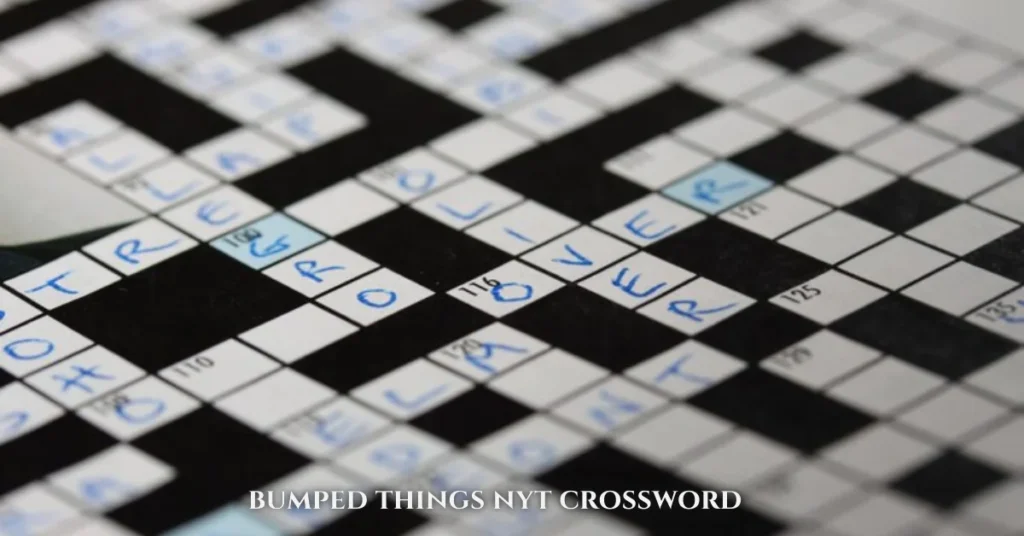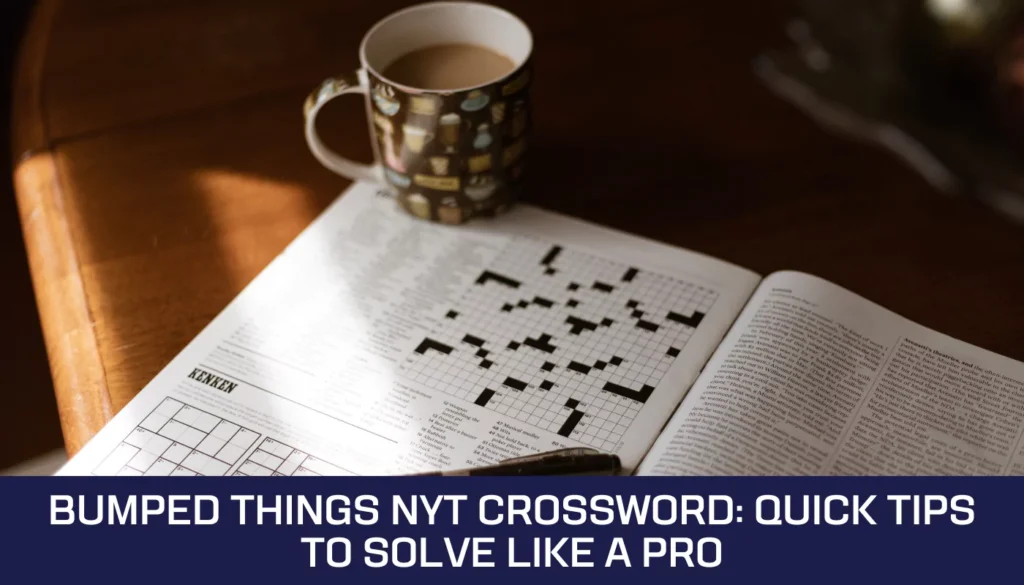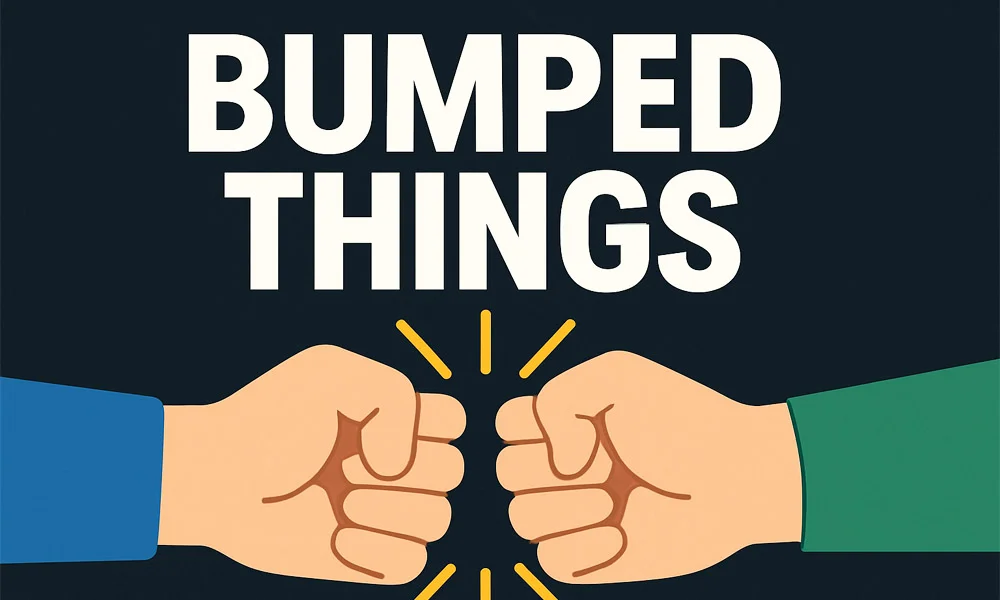The world of crosswords is a unique blend of linguistic cleverness, cultural awareness, and psychological insight. For decades, the New York Times Crossword has stood as the gold standard of puzzling prowess, both revered and feared by solvers from all walks of life. Among the thousands of clues that have challenged solvers, one recent entry has stirred intrigue and inspired deep reflection: bumped things nyt crossword.
To the casual eye, it may appear like a typical cryptic clue or a play on a common idiom. However, as with many New York Times Crossword entries, the clue bumped things nyt crossword is more than meets the eye. It encapsulates not only a challenge to vocabulary and reasoning but also a subtle cultural commentary embedded in a few succinct words. This article explores the many dimensions of this clue, why it resonates with so many solvers, and what it tells us about the evolving nature of crossword puzzles in contemporary culture.
Crossword puzzles, especially those curated by the New York Times, have continually evolved in language and structure. What was once a puzzle dominated by straightforward dictionary definitions has morphed into a domain filled with wordplay, puns, cultural references, and even modern slang. The emergence of phrases like “bumped things nyt crossword” represents this shift.
This particular clue stands out not only because of its apparent simplicity but because of its layered meanings. “Bumped” might refer to physical contact, a programming error, a flight change, or even social media exposure. “Things” is a broad placeholder that demands contextual grounding. Together, they demand a solver’s fluency in both traditional definitions and modern nuances.

Seasoned solvers know that NYT crosswords often challenge not just what you know, but how flexibly you can think. The clue bumped things nyt crossword tests lateral thinking. It might be a verb-noun phrase, a metaphor, or an idiom. Solvers must consider various meanings:
Was there a scheduling conflict, as with a “bumped” appointment?
Are “things” objects or abstract ideas like events or priorities?
The charm of the New York Times Crossword is in this ambiguity. Each possibility must be mentally tested against grid constraints, crossing letters, and the broader theme of the puzzle—if there is one.

Part of the NYT Crossword’s enduring popularity stems from its engagement with cultural moments. A clue like bumped things nyt crossword may draw from common vernacular or recent societal shifts. The pandemic, for example, introduced new uses of “bump” (as in elbow bumps or bumped Zoom meetings).
This evolving lexicon reflects the living nature of language. Crossword constructors often embed these modern idioms, slang, and references to keep the puzzle both timely and challenging. The phrase in question isn’t just linguistic—it’s sociolinguistic. It reflects how people communicate, adapt, and understand meaning in a fast-changing world.
Constructing a crossword is an art form. Each word, each clue must balance difficulty, creativity, and solvability. The inclusion of a clue like bumped things nyt crossword speaks volumes about the constructor’s intent. Perhaps it was designed to evoke a moment of realization, a click that only comes after a frustrating but rewarding mental journey.
Constructors often hide easter eggs in clues, nods to cultural or historical facts, or clever wordplay that requires a solver to think outside the box. In this case, the phrase could hint at any number of creative entries—nudges, shifts, or even “jostles.” Each possibility brings with it a narrative that extends far beyond the puzzle grid.

Beyond entertainment, solving clues like bumped things nyt crossword exercises the brain in critical ways. Neuroscientific studies have shown that such linguistic puzzles improve memory, enhance verbal fluency, and bolster problem-solving skills. Engaging with ambiguous clues improves mental flexibility, a key component of cognitive resilience in aging adults.
More than that, the clue prompts reflective thinking—an exploration of multiple meanings, metaphorical thinking, and even pattern recognition. It’s this intellectual engagement that keeps solvers returning day after day.
NYT crossword enthusiasts are not just solitary solvers; they’re part of a vast, vibrant community. Online forums, blogs, and social media threads often light up in discussion when a particularly unusual or clever clue appears. Clues like bumped things nyt crossword invite spirited debate: what was the constructor thinking? What alternate interpretations might exist?
These conversations aren’t just academic. They foster connection, shared experiences, and a sense of achievement. It’s not uncommon to see someone express sheer delight after cracking a difficult clue and then sharing that eureka moment with others.
Over the decades, NYT crossword puzzles have evolved into a kind of cultural archive. The clues and answers from various eras reflect prevailing trends, values, and events. The phrase bumped things nyt crossword will someday be looked back on as an artifact of its time—a linguistic snapshot of a moment when the word “bump” meant far more than it once did.
Crosswords not only entertain; they document. They encode the subtleties of language in a way that is surprisingly durable. And as language shifts, so do the clues, always keeping pace with the world they mirror.
Clues like bumped things nyt crossword are now finding their way into educational settings. Language teachers, especially those teaching English as a second language, use crosswords to teach idioms, expand vocabulary, and enhance reading comprehension.
Such clues are especially useful because they encourage interpretation and discussion. Students must not only understand word meanings but also consider connotation, usage, and cultural relevance. It’s a holistic approach to language learning, powered by puzzles.
In an age of information overload, critical thinking is more important than ever. The mental processes required to interpret clues like bumped things nyt crossword have broader applications in evaluating news, interpreting data, and resisting misinformation.
Solvers learn to identify bias, recognize multiple interpretations, and apply logic to ambiguity. In essence, every crossword becomes a mini-exercise in media literacy—an opportunity to think deeply and critically.
As technology continues to shape how we engage with content, crosswords are also evolving. Interactive formats, voice-activated puzzles, and AI-generated clues are becoming more common. Yet, the core appeal of the NYT crossword—clever clues like bumped things nyt crossword—remains unchanged.
Even as formats shift, the essence of a good clue endures: ambiguity, elegance, and a moment of realization that rewards effort. This speaks to the puzzle’s resilience and its ability to adapt while staying true to its intellectual roots.
Bumped things nyt crossword is not just a clue. It’s a microcosm of what makes crosswords so intellectually rich and culturally relevant. It invites interpretation, celebrates language, and connects people across different backgrounds and generations.
In a world increasingly driven by speed and simplicity, crosswords remind us of the joy of slow thinking, of reveling in complexity, and of discovering meaning in layers. Whether you’re a seasoned solver or a curious newcomer, clues like this one offer more than a challenge—they offer a chance to connect with language, culture, and community in deeply meaningful ways.

